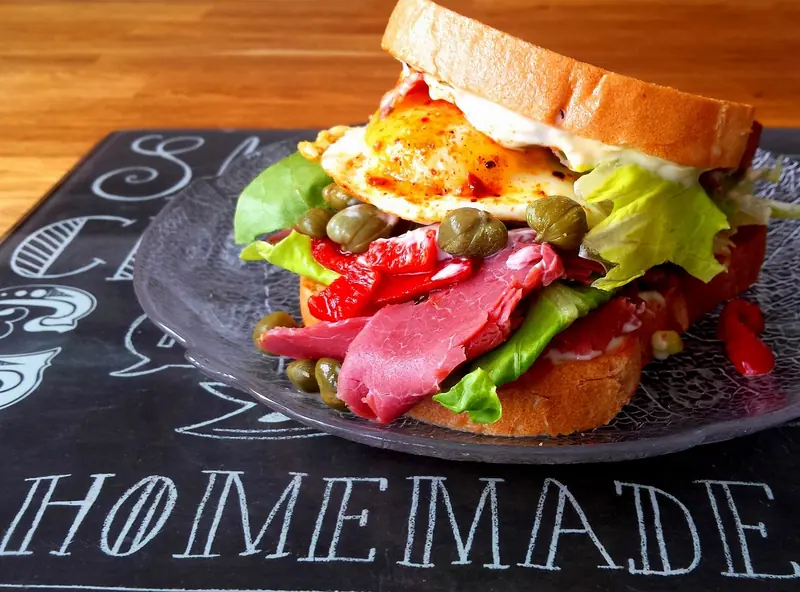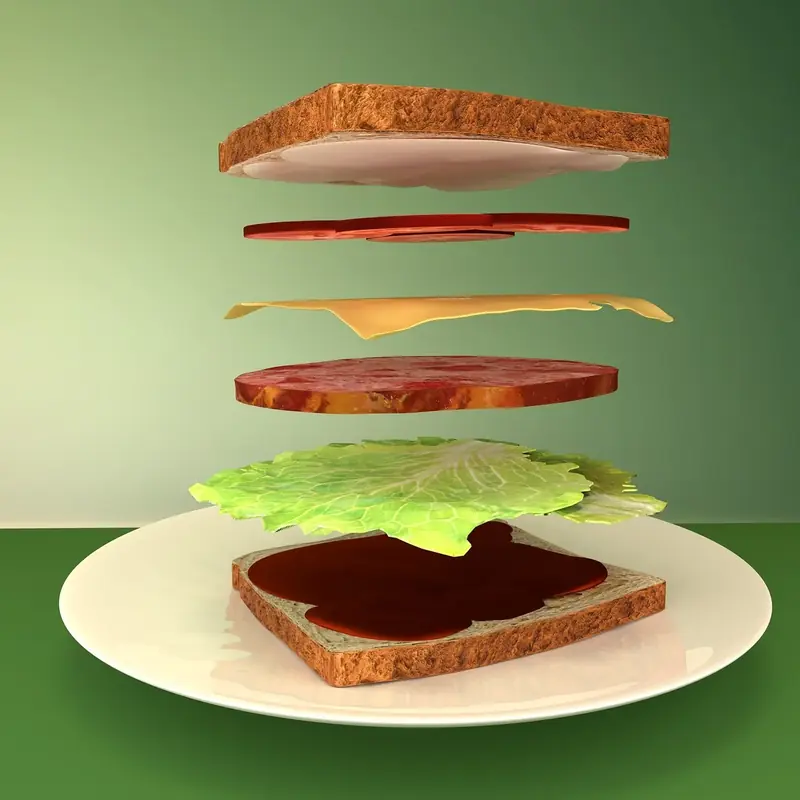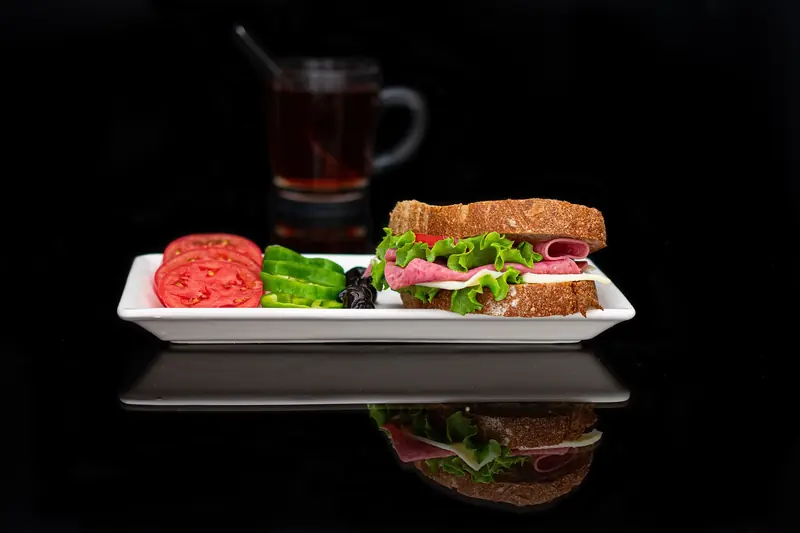
Professor of Experimental Psychology at the University of Oxford, Charles Spence, and his colleagues have uncovered the secret to the perfect sandwich. There aren’t many fast foods that have captured the hearts of people around the globe, but the sandwich is certainly one of them.
The invention of the sandwich is credited to the English diplomat John Montagu, the 4th Earl of Sandwich, who in 1762 introduced this snack that is now beloved not just by the British. Legend has it that during a card game, the Earl didn’t want to leave the table to eat, so he requested a portion of beef placed between two slices of bread, allowing him to eat without utensils, simply using his hands.
For over 250 years, passionate debates have raged over the best way to prepare and enjoy the perfect sandwich. Now, it seems these debates may finally have a resolution.

Butter, slices of dark bread, folded meat, and sun-dried tomatoes
In short, this is the formula proposed by Professor Charles Spence from Oxford. But the reality is much more complex.
According to him, in the ideal sandwich, all ingredients should be arranged symmetrically. The wetter components should be placed in the center. These can include lettuce, tomatoes, pickles, or pickled onions.
“Moist fillings need to be contained in the middle to prevent the bread from getting soggy,” Professor Spence noted. Importantly, instead of building the sandwich from the bottom up, one should place both slices of bread side by side and add the fillings sequentially.
Professor Alan Mackie agrees with Mr. Spence. “The key is to spread butter on both slices of bread, add the filling to each slice, and then bring them together,” he clarified.
When choosing bread, it’s best to opt for a loaf that won’t get soggy. Options like sourdough, whole grain, or brown bread are ideal.
“The main goal of the Earl of Sandwich’s invention was to keep hands clean, so using a greasy bread like focaccia is unacceptable,” Professor Spence emphasized. The slices should not be too thin, as they may fall apart, but also not too thick, as that would make them difficult to eat. The perfect thickness is about 2 cm.
As for the essential fatty emulsion component on the bread, it serves not only to enhance flavor. The layer of fat creates a barrier that repels moisture and helps prevent the bread from becoming soggy.
Mr. Spence asserts that the best product for this purpose is high-quality butter. Margarine, which is a highly processed food, is not acceptable. Similarly, mayonnaise, which the professor considers to be a “disgusting” ingredient for a sandwich, should be avoided.
The butter should be at room temperature (20°C) to make it easier to spread on the bread. Meanwhile, meat and cheese, which also contain a significant amount of fat, further help to keep unwanted moisture out of the sandwich.
According to Professor Mackie, it’s advisable to fold the meat in half, as this also creates an additional barrier against moisture. Another precaution against sogginess is to thoroughly pat dry the lettuce, pickles, and onions with a kitchen towel.

When it comes to tomatoes, they are the riskiest component of the sandwich, as they contain a lot of water that can ruin the overall flavor. Therefore, it’s best to dry the tomato component in the oven or a dehydrator.
Professor Spence places significant importance on the lettuce in creating the perfect sandwich. According to the scientist, it is perhaps the most crucial element that provides crunch when bitten into. This sound is associated with a higher level of satisfaction. It’s not only pleasant to our ears but also signals the freshness of the food.
A sandwich becomes even more appealing when it features as many colors as possible. “The brighter the colors, the better,” Professor Spence told the Daily Mail. “Just think about how dull a tuna and mayonnaise filling looks inside a sandwich made with white bread,” the scientist added.
Ultimately, Professor Spence warned that adding too many layers is not always beneficial. After all, one must remember that a sandwich needs to be bitten into somehow. And before taking a bite, it’s essential to ensure that everything in this culinary masterpiece holds together.
